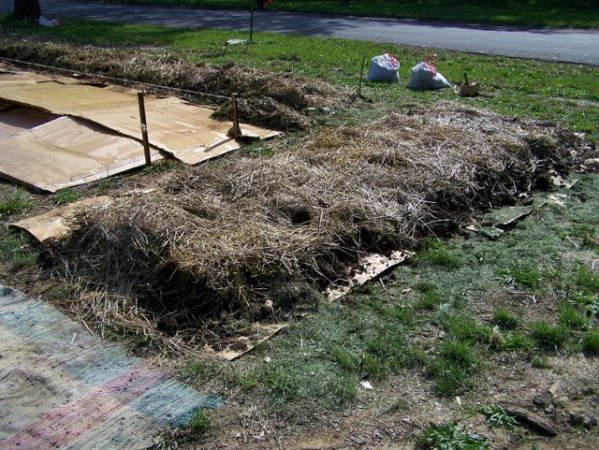
For the people who are hearing the term Lasagna gardening for the first time, donât be fooled by the name. This type of gardening does not deal with the growing of lasagna nor some exotic vegetable, fruit or plant. Lasagna gardening is basically a method of gardening without the need of digging, tilling or sod removing. Yes it does sound too good to be true but it is true. This method of gardening was first developed by writer and gardener, Patricia Lanza. The benefits of this type of gardening are that it is organic and saves time.
Evolution
The inventor of lasagna gardening, Patricia Lanza had seven children and had a career that required her to move around a lot. So each time she moved into a new house, she had to start working on her garden from base one. This seemed very frustrating as taking care of a garden involves a lot of hard work and takes up a lot of time. After going to the same routine a one too many a times, she put her knowledge and skill of helping her grandmother with her garden in the mountains of Tennessee to use.
It is important to state here that Tennessee soil takes a lot of work be made into a proper garden shape. She started looking for gardening methods that involved less time and yet be effective in maintaining a beautiful garden. Lanza used organic material to create layers. Thus evolved the concept of Lasagna gardening.
Key components
1. Animal manures
2. Hrass clippings
3. Shredded leaves
4. Vegetable peelings
5. Peat moss
6. Coffee grounds
7. Stalks, compost
8. Spoiled hay
9. Barn litter
10. Straw
Making a Lasagna garden is simple. Once you have accumulated all the above mentioned stuff, outline the area you want for your garden and put down the materials in layers. To make the first layer, use a material that is kind of heavy that would cover and smoother the weeds and grass on the ground. After that you could create a thick layer of wet cardboard and newspaper, making sure they overlap each other. Once that is done, the next layer needs to be that of peat moss and should be about 3 inches high. After that put in a four inch high layer of mulch. Follow this up by another layer of peat moss and then put in another layer of organic mulch. Do this till you have a bed at least 24 inches high.
An important thing to remember while doing all this is that you need to wt each layer while putting it down. Leave this bed to heat up and decompose on its own for six weeks. (Cover your bed with black plastic and you could put down bricks at the edges to prevent the plastic from flying.
If you want to create a whole new garden or change the location of your garden, you could build your lasagna garden from scratch. However, if youâre just looking to plant new plants at the same location all you need to do is remove a few layers and put the plant in the hole. Put some mulch back around the plant making sure you cover the roots properly. Water the plant thoroughly.
Whatâs so great about it?
There are many benefits of lasagna gardening. Here are a few:
1. It saves a lot to time and you can have new gardens at a faster rate.
2. It is organic.
3. You get fewer weeds as the newspaper suppresses them from below and the mulch coving the soil prevents them from growing.
4. A lasagna garden has better water retention as the compost that is being used to make the layers (the materials mentioned above) holds water far better than regular garden soils. This is especially true in places where the soil is sandy or has a deficient in organic matter.
5. You donât need to fertilize as much as you have to do for regular soil. This is because the compost you use is pure and rich in nutrients
6. The compost works as soil that is very easy to work on as it is fluffy, crumbly and loose.
What goes against it?
The only problem found with lasagna gardening is the fact that raised beds usually require more water. Since lasagna gardening involves gardening on raised beds, it requires a lot of water.
Things to watch out for
1. Donât overwork your garden (removing weeks and rocks).
2. Continuously watering your garden is very essential.
3. Remember to wet each layer as you go on putting them down.
Tips
1. It is best that you plant shallow root plants for the first two months.
2. Keep watering your young seeds as frequently as possible. Once the plant grows to around 6 or 7 inches, you can cut down on the water.




